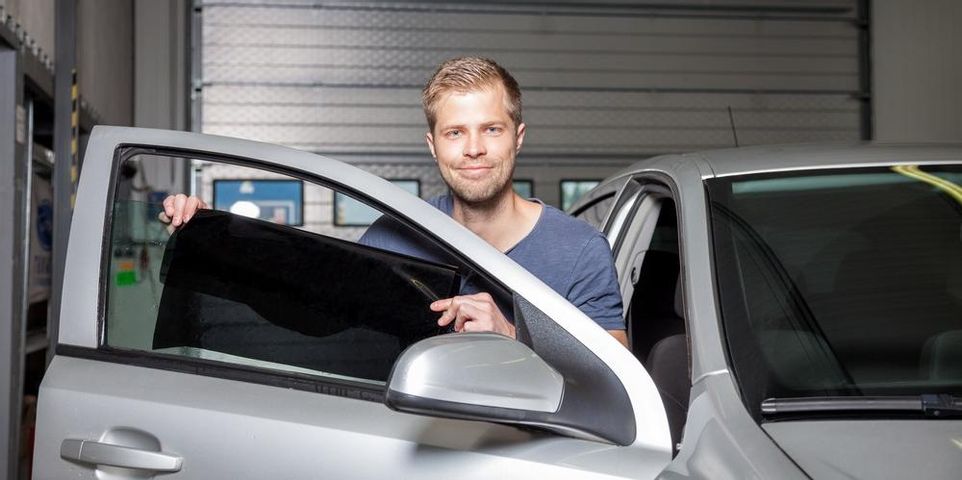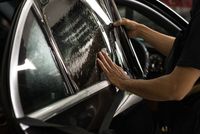
Window tinting offers many benefits that vehicle owners enjoy across the country. Tint film blocks out the sun’s harmful UV rays, keeps the car cooler during the summer, provides privacy, and can make your vehicle look more sleek and attractive—but each state has their own set of laws regarding tint darkness. The following are Illinois’ rules and regulations regarding window tints.
Tint Darkness for Sedans
Visible Light Transmission percentage (VLT%) measures the amount of visible light allowed through the tint film and window. In sedan vehicles, non-reflective tint is legal on the top 6” of the windshield. The driver, front passenger side, back seat and rear windows must allow in more than 35% of light.
Tint Darkness for SUVs & Vans
 The legal amount of tint allowed for SUVs and vans is slightly different than the amount allowed on sedans. 6“ of non-reflective tint can be applied to SUV and van windshields, while driver side and front passenger windows must allow in more than 35% of light. For the backseat and rear windows, any amount of darkness can be used in the tint application.
The legal amount of tint allowed for SUVs and vans is slightly different than the amount allowed on sedans. 6“ of non-reflective tint can be applied to SUV and van windshields, while driver side and front passenger windows must allow in more than 35% of light. For the backseat and rear windows, any amount of darkness can be used in the tint application.
Reflective Tint Allowances
Some tinting film contains metallics that can reflect light and reduce the amount of glare and heat produced by sunlight. In Illinois, the state laws are not specific about the use of special metallic film tints. Your local auto window tinting professional will be able to advise you on the best options available.
The experts at Bi-State Glass Coatings in Granite City, IL, can help you understand the legal best practices for window tinting so you can enjoy the benefits while following the law. Trust their skilled car window tinting specialists to handle all of your needs. To speak with a member of their team, call (618) 451-7346 or visit them online for more information about their services.

About the Business
Have a question? Ask the experts!
Send your question

